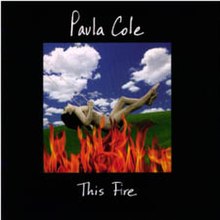This_Fire_(album)
This Fire (album)
1996 studio album by Paula Cole
This Fire is the second studio album by American singer-songwriter Paula Cole, released on October 15, 1996. According to the RIAA, the album has gone double platinum, selling over two million copies in United States[2] and peaked at number 20 on the Billboard 200.[3] According to the booklet, the album is dedicated to "the inner fire of all life. May our seeds of light open, brighten, and sow peace on earth".
This article needs additional citations for verification. (November 2009) |
Writing and producing the album herself, she recorded all of it in roughly two weeks. Cole released three official singles from the album. The lead single, "Where Have All the Cowboys Gone?" (1997), peaked at number eight on the Billboard Hot 100 and number four on the Adult Top 40. The second single, "I Don't Want to Wait" (1997), peaked at number 11 on the Billboard Hot 100 and was used as the theme song for The WB's teen drama series Dawson's Creek. The third and final single, "Me", was released in mid-1998 and peaked at number 35 on the Hot 100 Airplay. The song "Feelin' Love" was featured on the original motion picture soundtrack to the film City of Angels (1998).[4]
The album was nominated for seven awards at the 40th Grammy Awards, including Album of the Year, Best Pop Album, "Where Have All The Cowboys Gone?" for Record of the Year and Song of the Year, Best Female Pop Vocal Performance. Cole was also nominated for Producer of the Year and Best New Artist, winning the latter.
